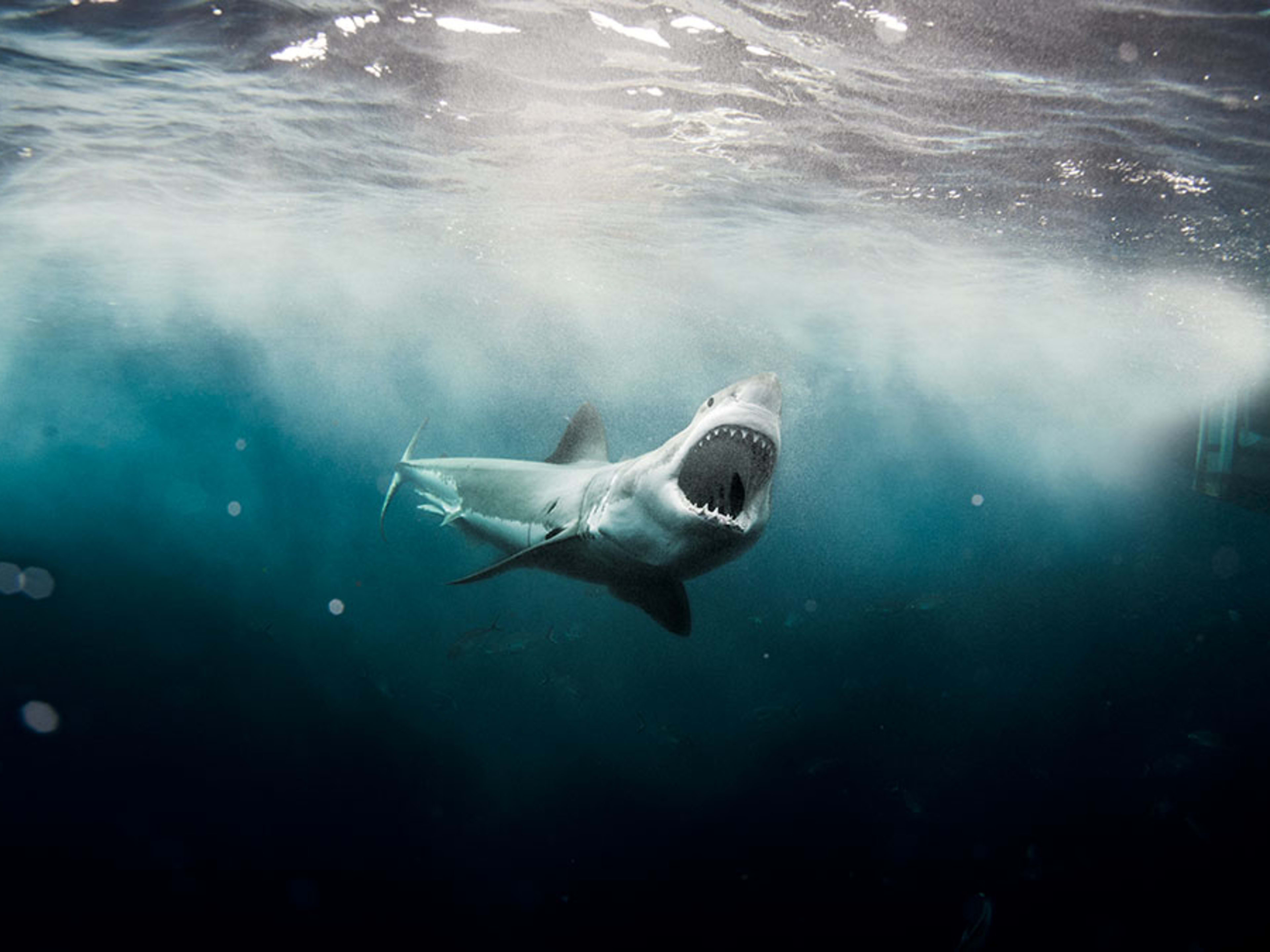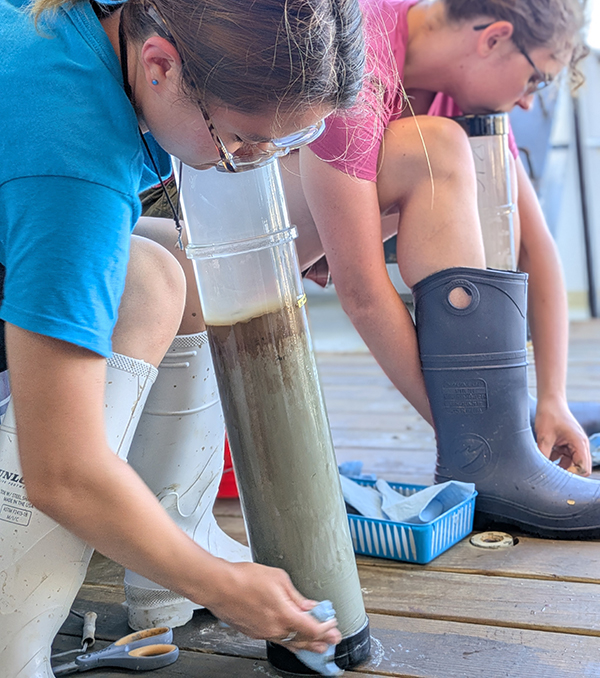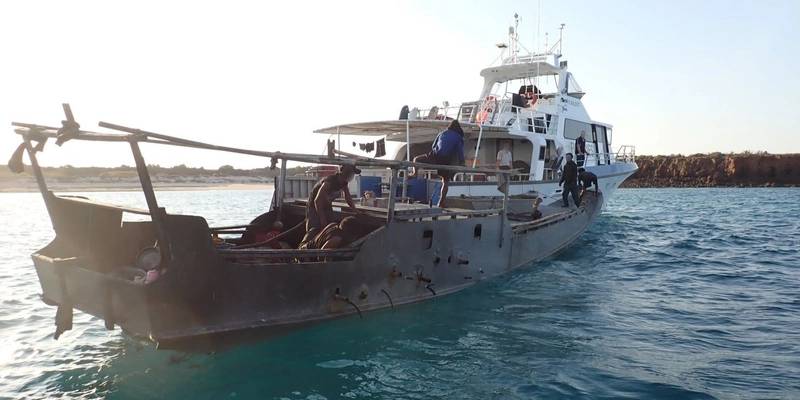Shark Awareness Day! Why It’s So Important To Protect Our Oceans’ Apex Predators Before It’s Too Late – World Animal News

Report on Shark Conservation and its Alignment with Sustainable Development Goals
1.0 Introduction
This report analyzes the critical status of global shark populations, examining the primary threats posed by human activities through the framework of the United Nations Sustainable Development Goals (SDGs). The conservation of sharks is intrinsically linked to the achievement of several SDGs, most notably SDG 14 (Life Below Water), which aims to conserve and sustainably use the oceans, seas, and marine resources for sustainable development.
2.0 Ecological Significance and Contribution to SDG 14
Sharks, as apex predators, are fundamental to marine ecosystem health, biodiversity, and stability. Their role directly supports the targets outlined in SDG 14.
- Maintaining Marine Biodiversity (SDG Target 14.2): By regulating the populations of species lower in the food chain, sharks prevent overgrazing of vital habitats such as coral reefs and seagrass beds. This function is essential for meeting SDG Target 14.2, which calls for the sustainable management and protection of marine and coastal ecosystems to avoid significant adverse impacts.
- Ensuring Ecosystem Stability: The decline in shark populations triggers trophic cascades that destabilize marine environments, threatening the long-term health and productivity of the oceans. Protecting sharks is therefore a prerequisite for maintaining the resilient marine ecosystems envisioned by SDG 14.
3.0 Primary Threats to Shark Populations and Contradiction to SDGs
Current threats to sharks are a direct result of human activities that contravene the principles of sustainable development, particularly SDG 12 (Responsible Consumption and Production) and SDG 14.
3.1 Unsustainable Consumption and Production Patterns (SDG 12)
- Shark Fin Trade: The demand for products such as shark fin soup drives the killing of an estimated 100 million sharks annually. This represents a pattern of unsustainable consumption that SDG 12 seeks to fundamentally change.
- Destructive “Finning” Practices: The practice of finning—removing a shark’s fins and discarding its body at sea—is an exceptionally wasteful and inefficient production method. It stands in direct opposition to SDG Target 12.2, which aims to achieve the sustainable management and efficient use of natural resources.
3.2 Unsustainable Fishing and Marine Management (SDG 14)
- Overfishing and Population Collapse: Data from the IUCN indicates that approximately 37% of shark and ray species are threatened with extinction. This level of overexploitation directly undermines SDG Target 14.4, which mandates the effective regulation of harvesting to end overfishing and restore fish stocks.
- Bycatch in Industrial Fisheries: A significant number of sharks are killed as unintentional bycatch in fisheries targeting other species. This highlights a failure in marine resource management and a barrier to achieving the holistic ecosystem protection goals of SDG 14.
4.0 Conservation Imperatives and Strategic Alignment with Global Goals
A robust conservation strategy for sharks must be implemented through actions that are directly aligned with specific SDG targets.
- Implement and Enforce Protective Legislation: The enactment and strict enforcement of national and international legislation banning shark finning and regulating trade are critical steps toward achieving SDG Target 14.4 and SDG Target 14.c (enhance the conservation and sustainable use of oceans and their resources).
- Promote Sustainable Fisheries Management: Transitioning to ecosystem-based fisheries management that utilizes selective gear to minimize bycatch and protects vulnerable marine species is essential for fulfilling the objectives of SDG 14.
- Foster Responsible Consumption (SDG 12): Reducing consumer demand for non-sustainable shark products through public awareness campaigns and policy interventions is a core component of achieving the sustainable consumption and production patterns outlined in SDG 12.
- Strengthen Global Partnerships (SDG 17): Effective conservation requires enhanced collaboration between governments, scientific bodies like the IUCN, and non-governmental organizations. Such partnerships, central to SDG 17 (Partnerships for the Goals), are necessary for data sharing, monitoring, and enforcing conservation measures across jurisdictions.
5.0 Conclusion
The protection of shark populations is not an isolated conservation issue but a fundamental requirement for achieving global sustainability commitments. The severe threats facing sharks from overfishing and unsustainable consumption directly impede progress on SDG 14 (Life Below Water) and SDG 12 (Responsible Consumption and Production). Implementing targeted conservation actions aligned with the SDG framework is imperative to ensure the survival of these vital species and, by extension, the health, resilience, and productivity of marine ecosystems for future generations.
Analysis of Sustainable Development Goals in the Article
1. Which SDGs are addressed or connected to the issues highlighted in the article?
-
SDG 14: Life Below Water
- This goal is central to the article, which focuses entirely on the conservation of sharks, the health of marine ecosystems, and the threats posed by human activities like overfishing and finning. The text explicitly discusses the decline of shark populations, the degradation of marine habitats like coral reefs, and the need to protect marine biodiversity.
-
SDG 12: Responsible Consumption and Production
- The article directly links the decline in shark populations to consumer demand, specifically mentioning that the killing of sharks is “primarily driven by the demand for shark fin soup in Asia.” This highlights a pattern of unsustainable consumption that drives destructive production (fishing) practices. The call to raise awareness and support legislation to ban finning is an appeal for more responsible consumption and production patterns.
2. What specific targets under those SDGs can be identified based on the article’s content?
-
Under SDG 14 (Life Below Water):
- Target 14.2: “By 2020, sustainably manage and protect marine and coastal ecosystems to avoid significant adverse impacts… and take action for their restoration in order to achieve healthy and productive oceans.” The article supports this by describing how the decline in sharks leads to the “degradation of critical habitats such as coral reefs” and emphasizing the need to protect sharks to ensure a “vibrant, thriving ocean ecosystem.”
- Target 14.4: “By 2020, effectively regulate harvesting and end overfishing, illegal, unreported and unregulated fishing and destructive fishing practices…” This target is directly addressed by the article’s mention of “100 million sharks are killed annually,” the “brutal fishing practices” of finning, and sharks being caught as “bycatch in fisheries.” The call to “implement stronger measures to protect them” aligns with the need for regulation.
- Target 14.5: “By 2020, conserve at least 10 percent of coastal and marine areas…” While the article does not mention a specific percentage, its core message is about the “conservation of sharks” and the need to “protect them in the wild,” which is the fundamental principle of this target.
-
Under SDG 12 (Responsible Consumption and Production):
- Target 12.2: “By 2030, achieve the sustainable management and efficient use of natural resources.” The article highlights the unsustainable use of a natural resource (sharks) driven by the demand for shark fin soup, leading to population decimation.
- Target 12.8: “By 2030, ensure that people everywhere have the relevant information and awareness for sustainable development and lifestyles in harmony with nature.” The article is an example of this target in action, as its purpose is to “raise awareness about the conservation of sharks” and the consequences of unsustainable practices like finning.
3. Are there any indicators mentioned or implied in the article that can be used to measure progress towards the identified targets?
-
For Target 14.2 (Protecting Marine Ecosystems):
- An implied indicator is the health and stability of marine ecosystems, such as coral reefs. The article suggests that the degradation of these habitats is a consequence of declining shark populations, so monitoring their health would be a measure of progress.
-
For Target 14.4 (Ending Overfishing):
- A direct indicator mentioned is the number of sharks killed annually, with the article providing a baseline figure of “100 million.” A reduction in this number would indicate progress.
- Another implied indicator is the prevalence of destructive practices like finning and bycatch. Tracking the implementation and enforcement of bans on finning would measure progress.
-
For Target 14.5 (Conservation):
- A direct indicator is the conservation status of species. The article cites the IUCN, stating that “approximately 37% of sharks and rays are threatened with extinction.” This percentage, which is related to the Red List Index, can be monitored over time to measure conservation success.
-
For Target 12.8 (Awareness and Sustainable Lifestyles):
- An implied indicator is the level of public awareness and policy change. The article calls for raising awareness and supporting “legislation to ban shark finning.” The number of countries enacting such bans or survey data on public attitudes towards shark conservation could serve as indicators.
4. Table of SDGs, Targets, and Indicators
| SDGs | Targets | Indicators Identified in the Article |
|---|---|---|
| SDG 14: Life Below Water | 14.2: Sustainably manage and protect marine and coastal ecosystems. | Health and coverage of critical habitats like coral reefs (implied). |
| SDG 14: Life Below Water | 14.4: End overfishing and destructive fishing practices. | Number of sharks killed annually (mentioned as 100 million). |
| SDG 14: Life Below Water | 14.5: Conserve coastal and marine areas. | Proportion of species threatened with extinction (mentioned as 37% of sharks and rays via IUCN). |
| SDG 12: Responsible Consumption and Production | 12.2: Achieve the sustainable management and efficient use of natural resources. | Consumer demand for shark products, such as shark fin soup (implied). |
| SDG 12: Responsible Consumption and Production | 12.8: Ensure people have relevant information and awareness for sustainable lifestyles. | Implementation of legislation to ban shark finning (implied). |
Source: worldanimalnews.com

What is Your Reaction?
 Like
0
Like
0
 Dislike
0
Dislike
0
 Love
0
Love
0
 Funny
0
Funny
0
 Angry
0
Angry
0
 Sad
0
Sad
0
 Wow
0
Wow
0











































































